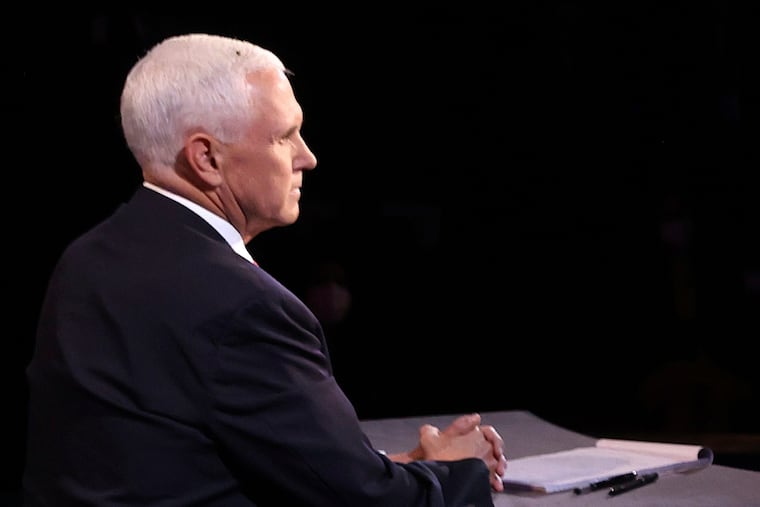Life imitates art, and so a fly landed on Mike Pence’s head
"It is known that flies land on white surfaces," one professor says.

If you were a liberal viewer, or perhaps an art historian, the fly that alighted on Vice President Mike Pence’s hair during Wednesday night’s debate was a bit on the nose. Throughout the history of western painting, imagery of flies can symbolize death, rot, decay, corruption and “painting’s power to deceive the eye,” says Celeste Brusati, professor emerita of art history at the University of Michigan. And there was one, sitting on the vice president’s head, just as he was talking about his and the president’s support for law enforcement.
But then again, 2020 has not been known for nuance.
The Fly became The Thing Everyone Talked About in the aftermath of the debate. Fly-themed Twitter accounts were hatched en masse. Several media outlets, including The Washington Post, published essays from the perspective of The Fly. Lawmakers on both sides of the aisle had jokes. The Biden campaign began hawking flyswatters, which were sold out by the next morning. It was all very fun, in a fun-starved kind of way.
This is, in part, because the 2020 election has thus far been completely devoid of memes. The 2016 campaign — a more innocent time — gave us Ken Bone, “Please clap” and Birdie Sanders, which took off after a bird landed on Sen. Bernie Sanders’s lectern during a rally. But the high stakes of this election cycle have made silliness both entirely inappropriate and desperately needed.
Thus, The Fly: a symbol of rot and decay. Lefty jokesters on Twitter did not need an art history degree to make cracks about Pence being the demon Beelzebub, or the "Lord of the Flies," or a corpse. But those who did may have unknowingly participated in an aesthetic tradition that reaches back centuries.
In 15th-century Dutch painting, "The fly is painted as a 'trompe-l'oeuil' (sic) effect, often with a shadow so that it appears the fly is a live specimen on the painting. This was done to indicate that the person had died," wrote Dutch professor Marcel Dicke, in an article, "Insects in Western Art," in the journal American Entomologist. (By the way, a fly landed on Hillary Clinton's face during a 2016 debate, as well; read into that what you will.)
There's a legend about the great Proto-Rennaissance painter Giotto that describes his skill: As an apprentice, he painted a fly on a face in one of his master's paintings. When his master returned, he tried several times to brush the fly away — it was that lifelike.
So too, for Pence's fly: Some viewers tried to swat it off their TV screens.
"The fly causes you to wonder if it is a real fly that has landed there, or if it was painted by the artist. That moment of doubt is part of the delight," says Paul Crenshaw, an associate professor of art history at Providence College, in an email. "With respect to the debate, my response was kind of like that — is this really happening? And how long is that fly going to stay there?"
» READ MORE: Fact-checking the vice presidential debate between Mike Pence and Kamala Harris
Alvaro Romero, an associate professor of urban entomology at New Mexico State University, said the fly's pause likely had nothing to do with decay, either physical or spiritual.
"It is known that flies land on white surfaces," like Pence's hair, says Romero. "My white truck is covered with house flies during fly season."
The Fly rested in Pence’s arctic coiffure for approximately two minutes, respecting moderator Susan Page’s time limit. Only a few hours later, the jokes about flies had succumbed to their own symbolism: They had begun to decay.